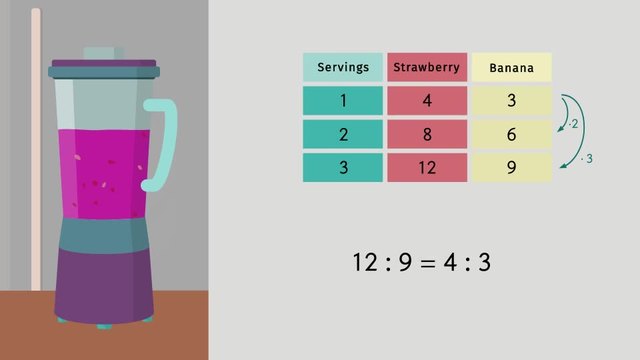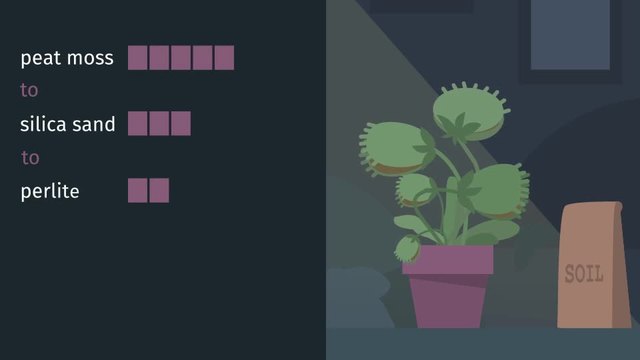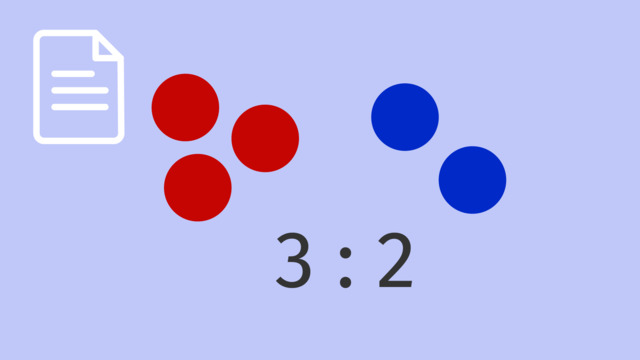Representing Proportional Relationships by Equations


Basics on the topic Representing Proportional Relationships by Equations
Representing Proportional Relationships by Equations – Introduction
When we talk about relationships in mathematics, we're often referring to how one quantity relates to another. Proportional relationships are an essential concept in this context, much like a blueprint for understanding how different variables interact. In this introduction, we'll start exploring how to represent these proportional relationships using equations, a fundamental skill in both math and real-life applications.
Understanding Proportional Relationships – Definition
A proportional relationship exists between two quantities when they increase or decrease at the same rate. This means that the ratio between these quantities remains constant.
For instance, if you have a situation where the more hours you work, the more money you earn at a constant rate, there's a proportional relationship between your work hours and your earnings.
Let’s look at an example!
Example: If you have 4 bags of flour weighing 8 kilograms in total, are the number of bags and the total weight proportional?
Yes, they are proportional. The constant ratio (weight per bag) is $2$ kilograms, since $8$ kilograms divided by $4$ bags is $2$ kilograms per bag. This means for every bag of flour, the weight increases uniformly by $2$ kilograms.
Try the following on your own!
Representing Proportional Relationships – Example
Let's consider the following scenario: a taxi company charges a flat rate of $5 plus $2 per mile driven. How would we represent this proportional relationship by an equation?
- Identify the constant of proportionality: The price per mile is $2.
- Set up the equation: The total cost ($C$) is equal to the flat rate ($\$$5) plus the cost per mile ($\$$2) times the number of miles ($m$).
Thus, the equation representing this scenario is: $C = 5 + 2m$
Practice by using the information above to answer the following question.
A fruit seller charges $\$$1.50 per pound of apples.
Representing Proportional Relationships – Summary
Key Learnings from this Text:
- A proportional relationship is when two quantities increase or decrease at the same rate.
- The constant of proportionality is the constant ratio between two proportional quantities.
- You can represent proportional relationships using linear equations.
- These concepts are widely used in real-life situations like calculating expenses, distances travel, and more.
Explore other content on our platform for interactive practice problems, videos, and printable worksheets to enhance your understanding of proportional relationships and equations.
Representing Proportional Relationships by Equations – Frequently Asked Questions
Transcript Representing Proportional Relationships by Equations
June is buying fruit from Penny to enter a world's biggest fruit salad competition. To find out how much money she will spend, June will be representing proportional relationships by equations. June needs to identify the unit rate in cost of fruit per pound, which can be represented with the variable k. The equation that represents a proportional relationship is written like this, k is the unit rate. Y is the dependent variable which is affected by the independent variable. X is the independent variable, which is the one that is being manipulated by the unit rate. It's important to write a let statement to define the variables used. In this case, let y represent the total cost since that will be affected by the x, and let x represent the pounds of fruit, the independent variable. Let's see which fruit June decides to buy first! The blueberries cost three dollars and seventy-five cents per pound. The unit rate, k, is three and seventy-five hundredths. Remember the equation y equals k times x. The unit rate is then substituted for k in the equation. The variables y and x will remain variables because y, which is the cost, will will depend on the x amount of pounds that June buys June will need more than just blueberries if she wants to set the worlds biggest fruit salad record! Penny has grown some pineapples in her garden and is selling them for two dollars and thirty-five cents per pound. The unit rate of cost per pound for the pineapples is two and thirty-five hundredths. Again to find the total cost y, the unit rate is substituted into k to be multiplied by the pounds x. The equation to represent the proportional relationship of pounds of pineapples to cost would be y equals two and thirty-five hundredths times x. Penny suggests June add in some of her fresh strawberries because they are in season. The strawberries cost four dollars and fifty cents per pound. What is the unit rate of the strawberries? The unit rate is four and five tenths. Don't forget when we are writing an equation we need to define our let statements. The x is the independent variable and will represent the pound of strawberries. The y is the dependent variable and will represent the total cost of strawberries. How will you write the equation that represents this proportional relationship? Y equals four and five-tenths multiplied by x. June decides she has room for one additional type of fruit in her salad, but she wants to add something big! The last fruit she will buy is watermelon, which cost ninety cents per pound. Pause here and help June represent the cost of watermelons per pound, with an equation. The unit rate is nine-tenths. Write let statements for the independent and dependent variables, and write the equation! To summarize, one way we can represent a proportional relationship is by writing an equation. First, identify the unit rate. Next, define the dependent and independent variables with let statements. And then write your equation! June is wondering what sort of competition there will be for this contest!
Representing Proportional Relationships by Equations exercise
-
What is the unit rate (k) of the bananas?
HintsRemember: The unit rate (k) is the cost of fruit per 1 pound.
For example, if Penny was selling melons for $2.15 per pound, the unit rate of the melons would be 2.15.
SolutionThe unit rate (k) in a proportional relationship is the cost of fruit per 1 pound.
Penny is selling the bananas for $1.25 per pound.
Therefore, the unit rate of the bananas is 1.25.
-
Write the equation that represents the proportional relationship of pounds of apples to cost.
HintsThe unit rate of cost per pound for the apples is 2.65.
k = 2.65
To write the equation that represents the proportional relationship, the unit rate is substituted for k in:
y = kx
SolutionThe equation that represents a proportional relationship is y = kx.
The unit rate (k) of cost per pound for the apples is 2.65.
Therefore, to find the equation that represents the proportional relationship of pounds of apples to cost, we substitute 2.65 for k in y = kx.
The answer is: y = 2.65x.
-
Assign the pairs.
HintsThe unit rate is the cost of fruit per 1 pound. Which variable can the unit rate be represented with?
$y$ is affected by the value of $x$.
For example, the total cost of apples is affected by (dependent on) the pounds of apples bought.
SolutionDependent variable: $y$
The equation that represents a proportional relationship: $y = kx$
Unit rate: $k$
Independent variable: $x$
-
Penny begins selling vegetables.
HintsThe dependent variable ($y$) is affected by the independent variable ($x$). The total cost of vegetables is affected by the pounds of vegetables bought. Therefore, what would $x$ = and $y$ =?
The equation to represent the proportional relationship between two variables is $y = kx$, where $k$ = the unit rate (the cost per 1 pound).
SolutionCarrots:
- $x$ = pounds of carrots and $y$ = total cost of carrots.
- The unit rate $k$ is 1.9.
- The equation to represent the proportional relationship of pounds of carrots to cost is $y = 1.9x$.
Broccoli:
- $x$ = pounds of broccoli and $y$ = total cost of broccoli.
- The unit rate $(k)$ is $1.15$.
- The equation to represent the proportional relationship of pounds of broccoli to cost is $y = 1.15x$.
Onions:
- $x$ = pounds of onions and $y$ = total cost of onions.
- The unit rate $(k)$ is $2.4$.
- The equation to represent the proportional relationship of pounds of onions to cost is $y = 2.4x$.
Explanation:
- The dependent variable ($y$) is affected by the independent variable ($x$). The total cost of vegetables is affected by the pounds of vegetables bought. Therefore, the independent variable ($x$) would be pounds of vegetables, and the dependent variable ($y$) would be total cost of vegetables.
- The unit rate ($k$) is the cost per 1 pound of vegetables. For example: the carrots cost $1.90 per pound. Therefore, the unit rate is 1.9.
- The equation to represent the proportional relationship between two variables is $y = kx$, where $k$ = the unit rate. For example, to find the equation for the carrots, we substitute the 1.9 for $k$: $y = 1.9x$.
-
What is the equation that represents the proportional relationship of pounds of raspberries to cost?
HintsThe unit rate of cost per pound for the raspberries is 1.85.
k = 1.85
To write the equation that represents the proportional relationship, the unit rate is substituted for k in:
y = kx
SolutionThe equation that represents a proportional relationship is y = kx.
The unit rate (k) of cost per pound for the raspberries is 1.85.
Therefore, to find the equation that represents the proportional relationship of pounds of raspberries to cost, we substitute 1.85 for k in y = kx.
The answer is: y = 1.85x.
-
How much money does June spend on blueberries?
HintsThe equation that represents the proportional relationship of pounds of blueberries to cost is:
$y = 3.75x$
where $x$ = pounds of blueberries and $y$ = total cost of blueberries.
You can use this equation to calculate how much June spends on blueberries (the total cost of blueberries $y$).
To calculate how much money June spends on blueberries, substitute the number of pounds June buys for $x$.
$y = 3.75(4)$
SolutionThe equation that represents the proportional relationship of pounds of blueberries to cost is:
$y = 3.75x$
where $x$ = pounds of blueberries and $y$ = total cost of blueberries.
You can use this equation to calculate how much June spends on blueberries (the total cost of blueberries $y$).
Substitute the number of pounds June buys for $x$: $y = 3.75(4) = 15$.
The answer is $15.
















